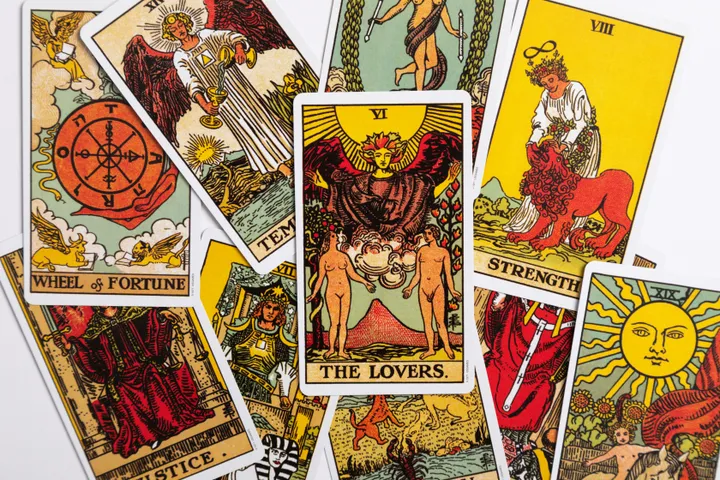Telling Your Story: The Art of Interpreting Cards in a Spread

Telling Your Story: The Art of Interpreting Cards in a Spread
You’ve learned the individual meanings of the Tarot cards, understood their evolutionary journeys within the suits, and discovered how to lay them out in meaningful spreads. You’ve even dipped your toes into the power of a single card. Now comes the heart of Tarot reading: interpreting the cards in context. This isn’t just about memorizing meanings; it’s about combining the wisdom of each card with the specific meaning of its position in the spread, allowing a cohesive and insightful narrative to emerge.
Think of it like reading a book. Each card is a word or a phrase, and its position in the spread is its place in a sentence or paragraph. You need to understand how each piece contributes to the overall story being told.
The Art of Synthesis: Card + Position
The core principle of interpretation in a spread is synthesis: blending the general meaning of a card with the specific question of the position it occupies.
- Understand the Card’s Core Meaning: What’s the overarching message of the card? What suit and number (or court rank) is it? What element is it associated with? What archetypal energy does it represent?
- Understand the Position’s Meaning: What aspect of your question does this specific position address? Is it the past, a challenge, an action, an influence, an outcome?
- Combine and Synthesize: How does the card’s energy manifest in that specific position? How does its meaning answer the question posed by the position?
Example:
- Card: The Three of Swords (Heartbreak, Sorrow, Betrayal)
- Position: “The Challenge” in a three-card spread.
- Synthesis: The challenge you’re facing is directly related to a painful emotional experience, possibly a betrayal or deep sorrow. It indicates a need to acknowledge and process this pain.
Layers of Interpretation: Beyond the Obvious
Once you’ve done the basic synthesis, deepen your interpretation by considering these layers:
- Keywords & Intuition: Start with the keywords you know for the card and the position. Then, allow your intuition to add nuance. What’s your gut feeling about this card in this specific spot?
- Imagery & Symbolism: Look closely at the image on the card. Are there particular symbols, colors, or expressions that stand out to you? How do they relate to the position’s meaning?
- Example: If the Eight of Swords (Feeling Trapped) appears in a “Solution” position, its imagery of being bound but having unbound feet might intuitively suggest that the solution lies in realizing you can free yourself, even if you feel trapped.
- Surrounding Cards (Context is King!): No card exists in isolation. How does it relate to the cards next to it?
- Flow/Progression: In a “Past, Present, Future” spread, how does the energy evolve from one card to the next? Does it get better, worse, or change direction?
- Contrast/Harmony: Are there cards that seem to contradict each other, highlighting an internal conflict? Or do they reinforce each other, showing a consistent theme?
- Themes: Do multiple cards from the same suit or number appear? This often highlights a strong theme (e.g., many Cups = emotional focus; many Fives = conflict).
- Major Arcana Dominance: If several Major Arcana cards appear, the reading points to significant life lessons, archetypal influences, or major turning points.
- Court Card Roles: If Court Cards appear, they could represent actual people, aspects of your own personality you need to embody, or specific approaches to the situation.
- The Question Itself: Always bring the interpretation back to your original question. How does this card, in this position, contribute to answering that specific query?
- The Overall Story: After interpreting each card individually and in relation to its neighbors, step back. What’s the overarching narrative the spread is telling? What’s the main message or advice?
Tips for Effective Interpretation
- Don’t Rush: Take your time. Allow the meanings to unfold.
- Journal Your Readings: Write down your questions, the cards you drew, and your interpretations. This helps you track your progress and insights over time.
- Practice, Practice, Practice: The more you read, the more intuitive and fluid your interpretations will become.
- Trust Your Intuition: Your intuition is your most valuable tool. If a card’s meaning resonates with you in a particular way that differs slightly from a book definition, honor that feeling.
- Look for the Actionable Advice: The Tarot is a tool for guidance. What practical steps or shifts in perspective does the reading suggest you can take?
- No “Bad” Cards: Even challenging cards like the Tower or the Ten of Swords are messengers. They highlight areas for growth, necessary endings, or hidden truths that need to be addressed. See them as opportunities for transformation.
By consciously blending the individual energies of the cards with the specific focus of their positions, you’ll begin to unlock the profound stories and actionable insights that Tarot spreads are capable of revealing. This iterative process of synthesis, reflection, and intuition is what transforms a collection of cards into a powerful guide for life.
Ready to take your interpretations even further by understanding how the “vibe” of a reading changes based on card reversals, surrounding cards, and overall feeling? Let’s explore the nuances of reading energy and flow in a Tarot spread.